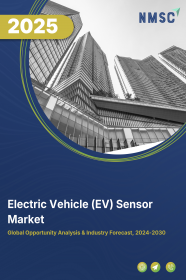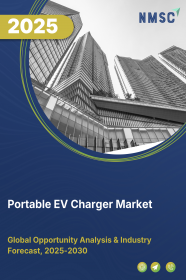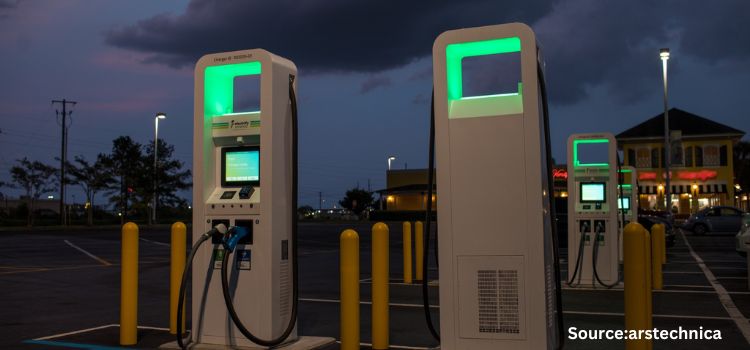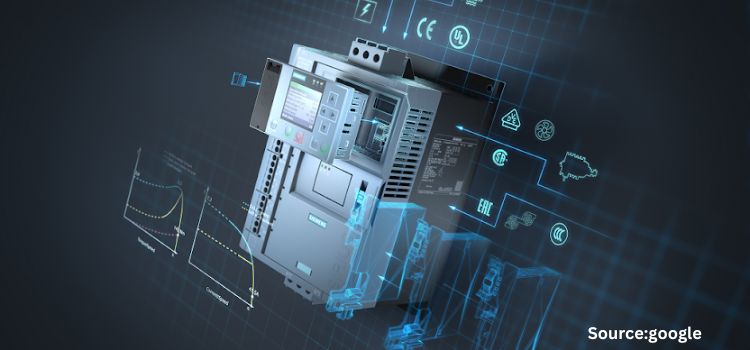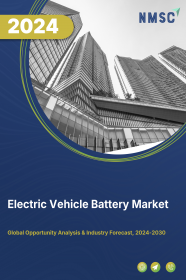
Electric Vehicle (EV) Battery Market by Propulsion Type (Battery Electric Vehicle, Hybrid Electric Vehicle, and Plug-in Hybrid Electric Vehicle), by Battery Type (Lead Acid Battery, Nickel Metal Hydride Battery, and Lithium-ion Battery), by Battery Capacity (<50kWh, 50-110kWh, 111-200kWh, 201-300kWh, and >300kWh), by Battery Form (Wire and Laser), by Vehicle Type (Passenger Car, Commercial Vehicle, Two-Wheeler, and Three-Wheeler) - Global Opportunity Analysis and Industry Forecast, 2024 – 2030
US Tariff Impact on Electric Vehicle Battery Market
Trump Tariffs Are Reshaping Global Business
Market Definition:
The Electric Vehicle Battery Market size was valued at USD 74.01 billion in 2023 and is predicted to reach USD 245.7 billion by 2030 with a CAGR of 17.6% from 2024-2030.
Electric vehicle batteries are generally used as a primary source of energy in electric vehicles. These batteries work on the principle of converting chemical energy into fuel energy. They are rechargeable in nature and activate quick propulsion through easy combustion and traction control. Also, these batteries offer extra-long backup and durability over conventional batteries.
Market Dynamics and Trends
There has been an increasing demand of EVs due to rising prices of fuels such as petrol and diesel that significantly inflate the total cost of ownership for consumers. Also, rollout of number of government initiatives such as Fame ii, National vehicle infrastructure policy, and Electric Vehicle Policy 2020, in different countries further drive the growth of EV battery market.
For instance, in April 2022, the U.S department of transportation, department of energy, and general services administration announced new actions to increase deployment of electric vehicles and chargers. Along with this announcement, the U.S. government also announced to build advanced electric vehicle charging infrastructure that would assure a clean transportation future.
Moreover, in December 2021, the Heavy Industry Ministry of India stated that there had been a rise in sales of electric two wheelers with advanced features from 700 per week to 5,000 per week after the remodelling of Fame ii scheme. In addition, decrease in battery prices due to increasing investment by leading OEMs such as BMW, Honda, and Toyota are driving the market growth.
However, factors such as difficulty in lithium mining, short lives of batteries, and lack of service centres are expected to restrain the growth of EV battery market. Moreover, innovative & evolved technologies such as wireless charging and ultra-fast acceleration along with rise in research and development would enhance the utility of batteries, thereby creating ample opportunities for market players in the coming future.
Market Segmentations and Scope of the Study:
The electric vehicle battery market is segmented on the basis of propulsion type, battery type, battery capacity, battery form, and vehicle type. On the basis of propulsion type, the market is divided into battery electric vehicle, hybrid electric vehicle, and plug-in hybrid electric vehicle, On the basis of battery type, the market is classified into lead acid battery, nickel metal hydride battery, and lithium- ion battery. On the basis of capacity, the market is categorised into <50kwh, 50-110kwh, 111-200kwh, 201-300kwh, and >300kwh. On the basis of battery form, the market is divided into wired and laser. By vehicle type, the market is categorised into passenger vehicles, commercial vehicles, two wheelers and three wheelers. Geographic breakdown and analysis of each of the aforesaid segments includes regions comprising of North America, Europe, Asia-Pacific, and RoW.
Geographical Analysis
Europe holds the major share of EV battery market during the forecast period. This is due to factors such as increasing usage of eco-friendly vehicles and growing application of lithium-ion batteries in countries such as U.K., France, and Germany. Moreover, availability of innovative vehicles such as Renault Zoe and Tesla Model 3, coupled with environmental concerns is further expected to foster the growth of electric vehicle battery market in this region.
However, Asia Pacific is expected to show a steady rise in the electric vehicle battery market. This is attributed to the adoption of zero emission technologies in the countries such as China, Japan, and India. Also, the European car manufacturers mostly use batteries that are manufactured in Asia-Pacific region due to lesser prices of batteries in this region. Moreover, China is the major manufacturer and consumer of EV batteries, which also contributes to the growth of the electric vehicle market in this region.
Competitive Landscape
The electric vehicle battery market comprising of various market players such as CATL, LG Energy Solutions, Panasonic, BYD, Samsung SDI, SK Innovation, CALB, AESC, Guoxuan and PEVE. These market players are adopting various joint venture strategies and planning expansion of business across various regions to maintain their dominance in the electric vehicle market.
For instance, in January 2022, BYD joined hands with Nuro to produce third- generation autonomous vehicles that charges up much quickly and could be used for a longer period. Also, in December 2021, Samsung SDI had unveiled the launch of its new brand PRiMX that comes with Samsung’s latest material technology such as silicon anode and nickel cathode. It delivers high performance and extra mileage. These initiatives by the market players are expected to increase the level of competition for online rental clothing market field.
Key Benefits
-
The electric vehicle battery market report provides the quantitative analysis of the current market and estimations through 2022-2030 that assists in identifying the prevailing market opportunities to capitalize on.
-
The study comprises a deep dive analysis of the EV battery market trend including the current and future trends for depicting the prevalent investment pockets in the market.
-
The information related to key drivers, restraints, and opportunities and their impact on the electric vehicle battery market is provided in the report.
-
The report also focuses on the competitive analysis of the market players along with their market share in the EV battery market.
-
The SWOT analysis and Porter’s Five Forces model is elaborated in the study.
-
Value chain analysis in the market study provides a clear picture of the stakeholders’ roles.
Key Market Segments
By Propulsion Type
-
Battery Electric Vehicle
-
Hybrid Electric Vehicle
-
Plug-in Hybrid Electric Vehicle
By Battery Type
-
Lead Acid Battery
-
Nickel Metal Hydride Battery
-
Lithium-ion Battery
By Battery Capacity
-
50kWh
-
50-110 kWh
-
111-200 kWh
-
201-300 kWh
-
>300 kWh
By Battery Form
-
Wired
-
Laser
By Vehicle Type
-
Passenger Car
-
Commercial Vehicle
-
Two-Wheeler
-
Three-Wheeler
By Geography
-
North America
-
U.S
-
Canada
-
Mexico
-
-
Europe
-
UK
-
Germany
-
France
-
Italy
-
Spain
-
Rest of Europe
-
-
Asia-Pacific
-
China
-
India
-
Japan
-
South Korea
-
Australia
-
Rest of Asia-Pacific
-
-
RoW
-
UAE
-
Saudi Arabia
-
South Africa
-
Brazil
-
Remaining Countries
-
Key Players
-
CATL
-
LG Energy Solutions
-
Panasonic
-
BYD
-
Samsung SDI
-
SK Innovation
-
CALB
-
AESC
-
Guoxuan
-
PEV
REPORT SCOPE AND SEGMENTATION:
|
Parameters |
Details |
|
Analysis Period |
2023–2030 |
|
Base Year Considered |
2023 |
|
Forecast Period |
2024–2030 |
|
Market Size Estimation |
Billion (USD) |
|
Market Segmentation |
By Propulsion Type (Battery Electric Vehicle, Hybrid Electric Vehicle, and Plug-in Hybrid Electric Vehicle), by Battery Type (Lead Acid Battery, Nickel Metal Hydride Battery, and Lithium-ion Battery), by Battery Capacity (<50kWh, 50-110kWh, 111-200kWh, 201-300kWh, and >300kWh), by Battery Form (Wire and Laser), by Vehicle Type (Passenger Car, Commercial Vehicle, Two-Wheeler, and Three-Wheeler) |
|
Geographical Segmentation |
North America (U.S., Canada, Mexico) Europe (UK, Germany, France, Italy, Spain, Rest of Europe), Asia-Pacific (China, India, Japan, South Korea, Australia, Rest of Asia-Pacific), Rest of the World (UAE, Saudi Arabia, South Africa, Brazil, Remaining countries) |
|
Companies Profiled |
CATL, LG Energy Solutions, Panasonic, BYD, SamsungSDI, SKIInnovation, CALB, AESC, Guoxuan, and PEVE. |

















 Speak to Our Analyst
Speak to Our Analyst



